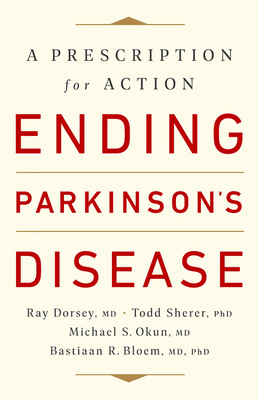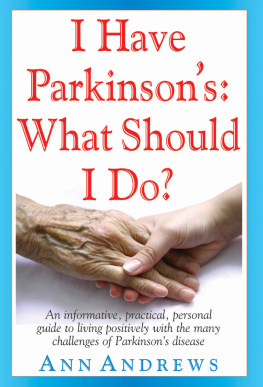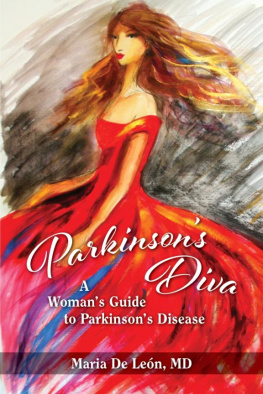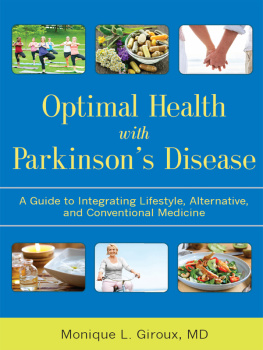Copyright 2020 by Ray Dorsey, Todd Sherer, Michael S. Okun, Bastiaan R. Bloem
Cover design by Pete Garceau
Cover copyright 2020 Hachette Book Group, Inc.
Hachette Book Group supports the right to free expression and the value of copyright. The purpose of copyright is to encourage writers and artists to produce the creative works that enrich our culture.
The scanning, uploading, and distribution of this book without permission is a theft of the authors intellectual property. If you would like permission to use material from the book (other than for review purposes), please contact permissions@hbgusa.com. Thank you for your support of the authors rights.
PublicAffairs
Hachette Book Group
1290 Avenue of the Americas, New York, NY 10104
www.publicaffairsbooks.com
@Public_Affairs
First Edition: March 2020
Published by PublicAffairs, an imprint of Perseus Books, LLC, a subsidiary of Hachette Book Group, Inc. The PublicAffairs name and logo is a trademark of the Hachette Book Group.
The Hachette Speakers Bureau provides a wide range of authors for speaking events. To find out more, go to www.hachettespeakersbureau.com or call (866) 376-6591.
The publisher is not responsible for websites (or their content) that are not owned by the publisher.
Illustrations and A Prescription for Action section design by Gerardo Torres Davila and Ellen Wagner
Library of Congress Cataloging-in-Publication Data
Names: Dorsey, Ray, author.
Title: Ending Parkinsons disease : a prescription for action / Ray Dorsey, Todd Sherer, Michael S. Okun, Bastiaan R. Bloem.
Description: New York : PublicAffairs, [2020] | Includes bibliographical references and index.
Identifiers: LCCN 2019030265 | ISBN 9781541724525 (hardcover) | ISBN 9781541724495 (ebook)
Subjects: LCSH: Parkinsons disease.
Classification: LCC RC382 .D644 2020 | DDC 616.8/33dc23
LC record available at https://lccn.loc.gov/2019030265
ISBNs: 978-1-5417-2452-5 (hardcover), 978-1-5417-2449-5 (ebook)
E3-20200219-JV-NF-ORI
To those who bear the burden of Parkinsons disease and to those who will help end it
Explore book giveaways, sneak peeks, deals, and more.
Tap here to learn more.

I N THIS BOOK, WE SHARE THE STORIES OF PEOPLE AFFECTED BY Parkinsons disease. Most of these accounts are based on interviews we conducted. In some cases, individuals asked that their names be changed to protect their privacy; we note these instances in the text. Other stories are taken from published reports and are referenced as such.
The views expressed here are those of the authors and not necessarily those of their employers. The authors are devoting their net proceeds to efforts to help end Parkinsons.
Below are definitions for key terms used in this book.
alpha-synuclein: A protein that is misfolded, or altered, in people who have Parkinsons disease. The misfolded protein forms clumps in nerve cells and likely contributes to nerve cell death.
dopamine: A chemical that is released from nerve cells in areas of the brain that are affected by Parkinsons.
levodopa: A drug that is converted into dopamine and is a highly effective medication for Parkinsons disease.
Lewy bodies: The clumps of misfolded alpha-synuclein and other proteins that are found in the brains of individuals with Parkinsons disease.
LRRK2: A specific gene that codes, or gives building instructions, for a protein in the brain and other parts of the body. Mutations in this gene are the most common genetic cause of Parkinsons disease.
mitochondria: The energy-producing parts of cells, which are damaged in Parkinsons and by some pesticides.
MPTP: An accidental chemical by-product of a street formulation of synthetic heroin. MPTP kills dopamine-producing nerve cells and has caused parkinsonism in some users of heroin.
neurotransmitter: A chemical that is released from nerve cell endings and enables communication between cells.
parkinsonism: A general term for any syndrome that causes tremors, slowed movements, stiffness, and imbalance. This condition has many causes, including Parkinsons disease, certain medications, and other diseases.
pesticide: Any substance used to prevent, destroy, repel, or mitigate any pest, including herbicides (for weeds), insecticides (for insects), and fungicides (for fungi) among other chemicals.
substantia nigra: A Latin phrase that literally means black substance. It refers to a small region of the brain that contains pigmented dopamine-producing nerve cells, which are damaged in people who have Parkinsons disease.
Below are common abbreviations used in this book.
EPA: US Environmental Protection Agency
FDA: US Food and Drug Administration
NIH: US National Institutes of Health
TCE: Trichloroethylene, a chemical that has been linked to Parkinsons disease
Every civilization has its own kind of pestilence and can control it only by reforming itself.
Ren Dubos, Mirage of Health, 1959
O N A BRILLIANT, BLUE-SKY DAY IN J UNE 2018, THE U NIVERSITY of Rochester hosted its annual Mens Health Day at the Locust Hill Country Club in upstate New York. Over three hundred men, most in their fifties, sixties, and seventies, came to hear the latest on enlarged prostates, colon cancer, and heart disease. I came to speak about Parkinsons disease.
Months earlier I had written a paper titled The Parkinson Pandemic with my friend and colleagueand now coauthorBas Bloem.
This is what I know. This is what I study. But as I stood there in front of the packed room at Mens Health Day, I was not prepared for what I was about to see. I opened my talk by asking how many people in the audience had a friend or family member with Parkinsons. Before I could finish asking the question, over two hundred hands had flown upalmost the entire room. Everyone looked around. A silence settled on us as we took in the sight. It didnt matter that I was an expert or that I had helped develop the statistics. Data always feel remote, but here it was in front of me, the evidence of the pandemic.
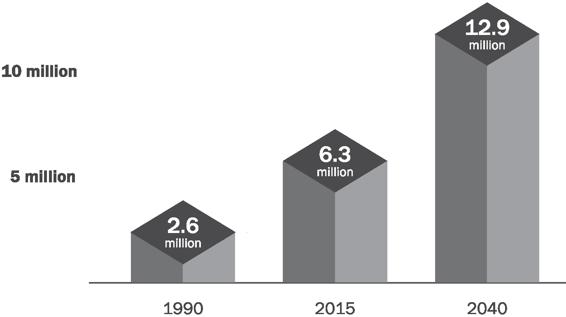
Parkinsons disease is characterized by tremors, slowness in movement, stiffness, and difficulties with balance and walking. It can also cause a wide range of symptoms that are not visibleloss of smell, constipation, sleep disorders, and depression. Most people with Parkinsons are diagnosed in their fifties or later. But it is not just a disease of the elderly. Up to 10% of those with the condition develop the disease in their forties or younger.
Parkinsons stems from a loss of nerve cells in a particular region of the brain that produces dopamine, the brain chemical that helps control movements such as walking. The disease has multiple causes including environmental hazardsair pollution, some industrial solvents, and particular pesticides. In addition, certain genetic mutations, head trauma, and the lack of regular exercise all increase risk.
The scale of the disease can feel overwhelming and the challenge daunting. But we can stop Parkinsons in some cases, and we may already know how.

